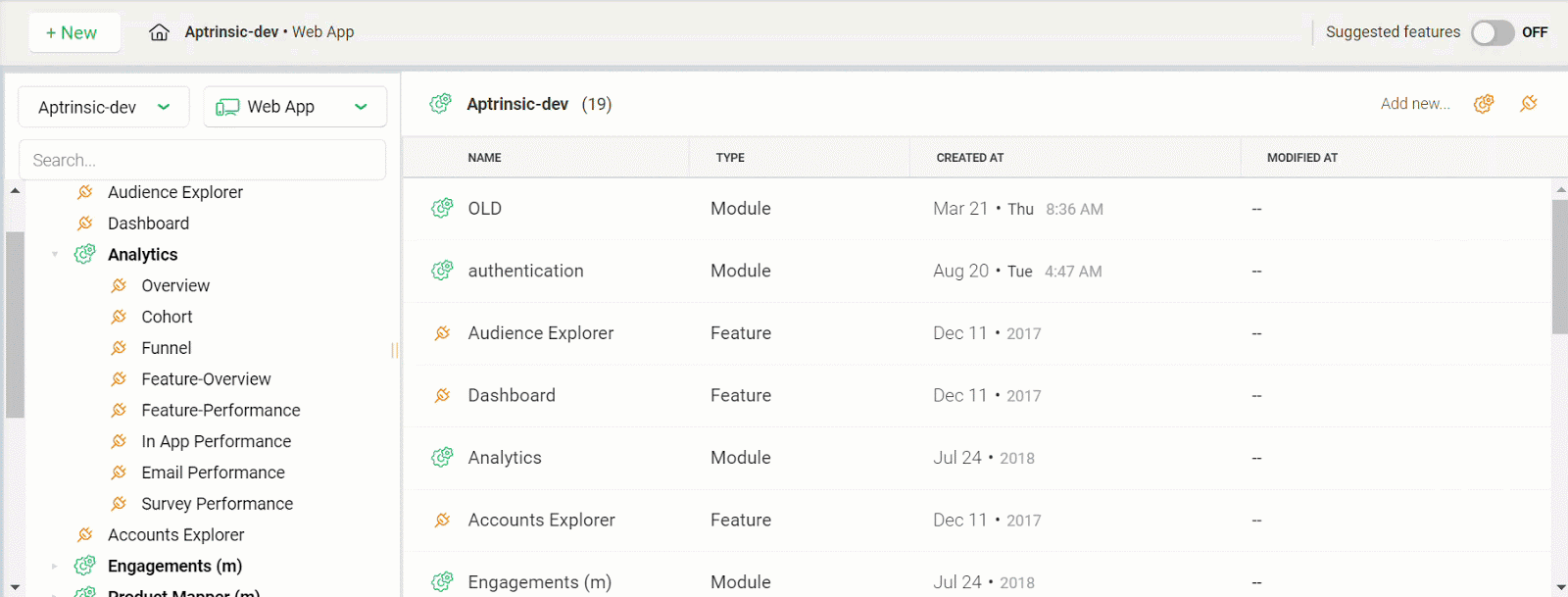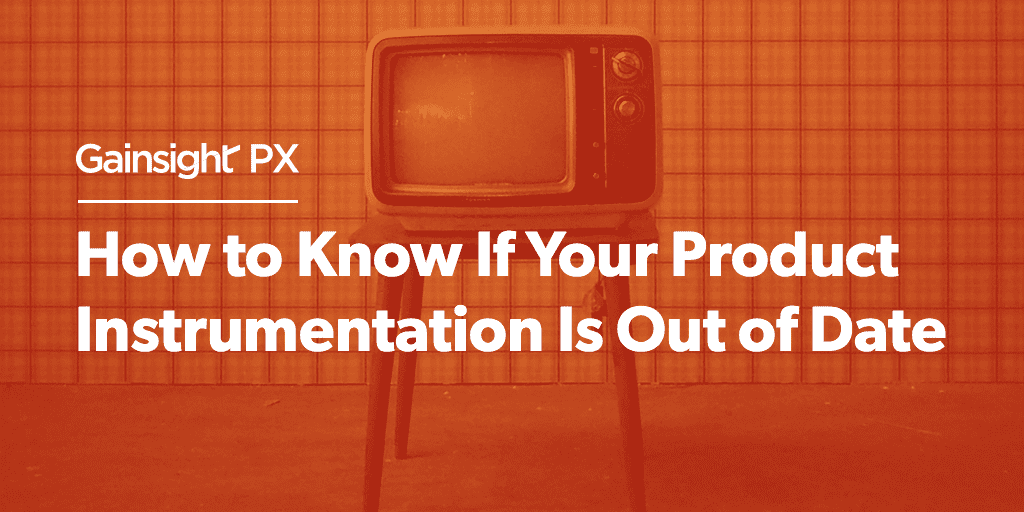If you’re using these old school methods, your product instrumentation is suffering.
Today’s product teams have easy access to tools that help them track every user action (or lack thereof). I’ve worked in the world of tech and SaaS products for over 18 years and let me tell you, it wasn’t always that way.
Automated product instrumentation is game-changing. I’m still in shock when I hear about the archaic processes people are using today. Manual logging. Querying your Dev team. Sacrificing the user experience for more data. (If your product analytics or engagement tool requires you to do any of these, that’s a red flag).
In this article, I’ll give my perspective on the importance of automated product instrumentation and the shortcomings of older methods still in use today.
Jump to a section.
Why is Product Instrumentation Important?
Outdated Product Instrumentation Methods
Why is Product Instrumentation Important?
Product instrumentation is the process of mapping out your product. If you’re planning to use a product analytics and product engagement solution, you’ll need to complete this process before you can actually use your solution.
Product instrumentation requires you to create a model of your product to associate user actions (a click, form fill, swipe, etc.) with each feature/module/event. The accuracy of this process is incredibly important and something you don’t want to get wrong.

This is an example of the product instrumentation feature in Gainsight PX. Our Instant Mapper tracks and suggests where to house new features, actions, and more. As you read you’ll see how long this use to take product teams even just a couple of years ago.
Once an incredibly manual and painstaking process, we now have ways to automate just about the entire product mapping process. This dramatically accelerates Time to Value (TTV) and in the long run, you won’t need a team member to manually add every new feature, module, and enhancement as your product grows.
“There has to be a better way” is a product professional’s mantra and this mentality has brought product instrumentation leaps and bounds. To truly appreciate the evolution of these methods, I’ll take you back in time for a quick history on product instrumentation and the headaches they bring. Just wait until you see how simply quick automated product instrumentation is and how it drastically reduces TTV.
Outdated Product Instrumentation Methods
Product analytics and engagement solutions ushered in a new era of efficiency and awareness, but they were bulky, time-consuming, and provided limited data. Many companies out there are still using solutions with outdated product instrumentation methods. Are you one of them?
Generation One
The first generation of product instrumentation came in the form of developer and system administration tools. At last, product teams had some visibility into how their applications were being used.
But, this solution was far from perfect. It required developer resources, a QA cycle, and deploys. Mistakes could mean big trouble. One wrong move and it opened up the risk of potentially losing the data the team worked so hard to get. On top of that, logging each web page, especially for high-volume web apps, degraded system performance. So you had to make a tradeoff—if you want reliable data you sacrifice the user experience.
Generation Two
These applications allowed developers to append meaningful context to user events. Finally, we could simply add a tag into our product and discern product features from URLs. This generation also introduced sophisticated data visualizations—graphs, dashboards, charts—for the first time, we had digestible user data that could be used to directly inform product decisions.
But, people using applications like this are still dependent upon their developers to build the product instrumentation. This solution also only provides forward-looking visibility and data has very little context about the user. There’s no indication of individual user characteristics or what account they belonged to.
Generation Three
The third generation of product instrumentation was the first time product teams could codelessly instrument their products.. Many product analytics solutions on the market today can track user events within your product and store them for you. But many still don’t provide automated product-mapping capabilities , leaving you with the following issues:
Issue #1: Initial setup is time-consuming
One issue with these solutions is they require product teams to spend countless hours specifying which user events they want to track. This includes regular upkeep and often comes paired with a steep learning curve. This process substantially slows down TTV.
Issue #2: Lack of automation means ongoing manual maintenance
Across the various product analytics and engagement options out there, they each have certain processes that can be automated. Some can surface untagged URLs, other automatically place your URL into a hierarchy—but it’s rare to find a product providing both, or has other helpful automated processes. Either way you cut it, there’s still manual effort that has to be made to keep your product hierarchy tree up-to-date.
The Benefits of Automated Product Instrumentation
Product instrumentation is one of those necessary to-do’s that comes with being in Product, but it doesn’t have to be a headache. With automated product instrumentation you can derive user insights and immense value from your analytics and engagements in just seconds versus weeks or even months with outdated methods. Imagine what this could mean for the time and sanity of your product team? With Instant product mapping you can:
- Dramatically accelerate TTV by instantly generating a hierarchical product map in one click, without engineering or development overhead.
- Eliminate errors and guesswork by organizing disparate user events into a logical hierarchy of product modules, sub-modules, and features.
- Put an end to time-consuming upkeep and enable your team to focus on value-generating efforts rather than maintaining a product map.
Not only does automated product instrumentation make your life easier, but it also makes the product experience better. Although invisible to users, having a well-organized hierarchy that automatically updates with new features, modules, and enhancements enables you to serve them better. A well-organized product hierarchy:
- Helps avoid notification overload by sending highly-targeted engagements to users.
- Eliminates the need to rely on long/confusing naming conventions.
- Maintains a more sustainable/scalable tracking strategy as your product matures over time.
- Closely follows user journeys through your product to pinpoint spots of friction.
Do I Need Automated Product Instrumentation?
You need it and once you try it, you will want it. If you’re currently using a product analytics or engagement solution, you might be thinking, “Well I’ve already gone through the work of mapping my product hierarchy, why switch to something else?” If you expect your product to grow, switching to a solution that automates the mapping process will save your team valuable time in the long run. If you’re currently in the market for solutions to improve your product experience, here are some questions to use during your evaluations:
- Do you build an auto-generated product hierarchy?
- Do you surface unmapped pages in my product?
- Does viewing my user data require coding knowledge?
- Do you retroactively capture user data?
Welcome to the future. We have self-driving cars, answer any question we have with a gadget we keep in our pocket, and finally get instant results from your product experience solution investments. Try Gainsight PX, the complete Product Experience Platform with automated product instrumentation, free for 15 days.
Spend 15 days in other solutions and you might still be putting together your product hierarchy. But in just minutes, Gainsight PX can start creating your product hierarchy so you can spend the remaining 14.75 days creating product experiences your customers love.

